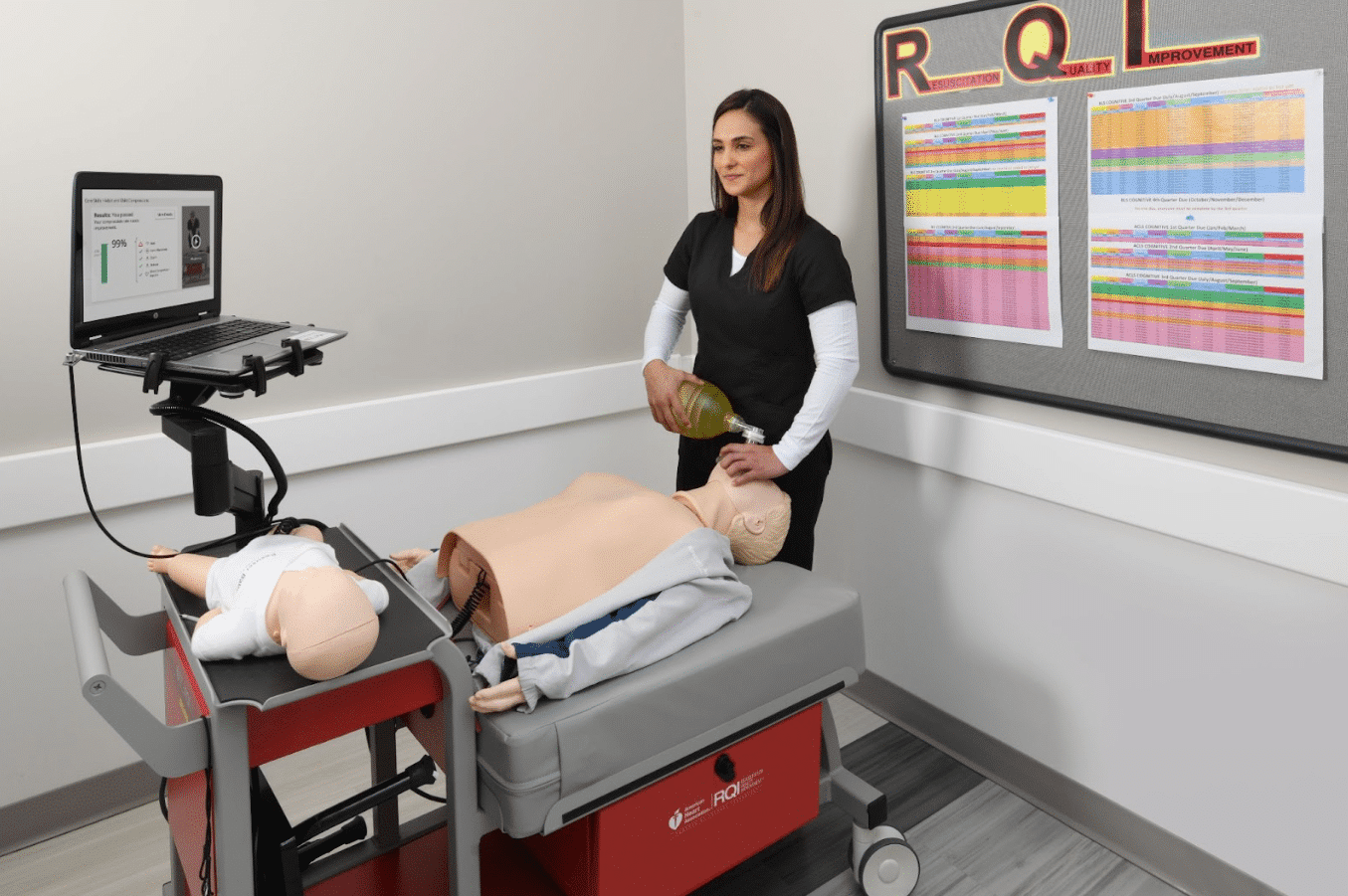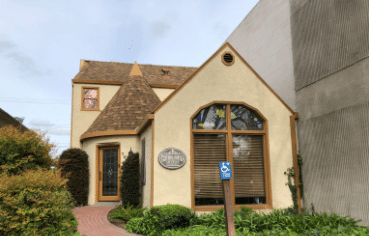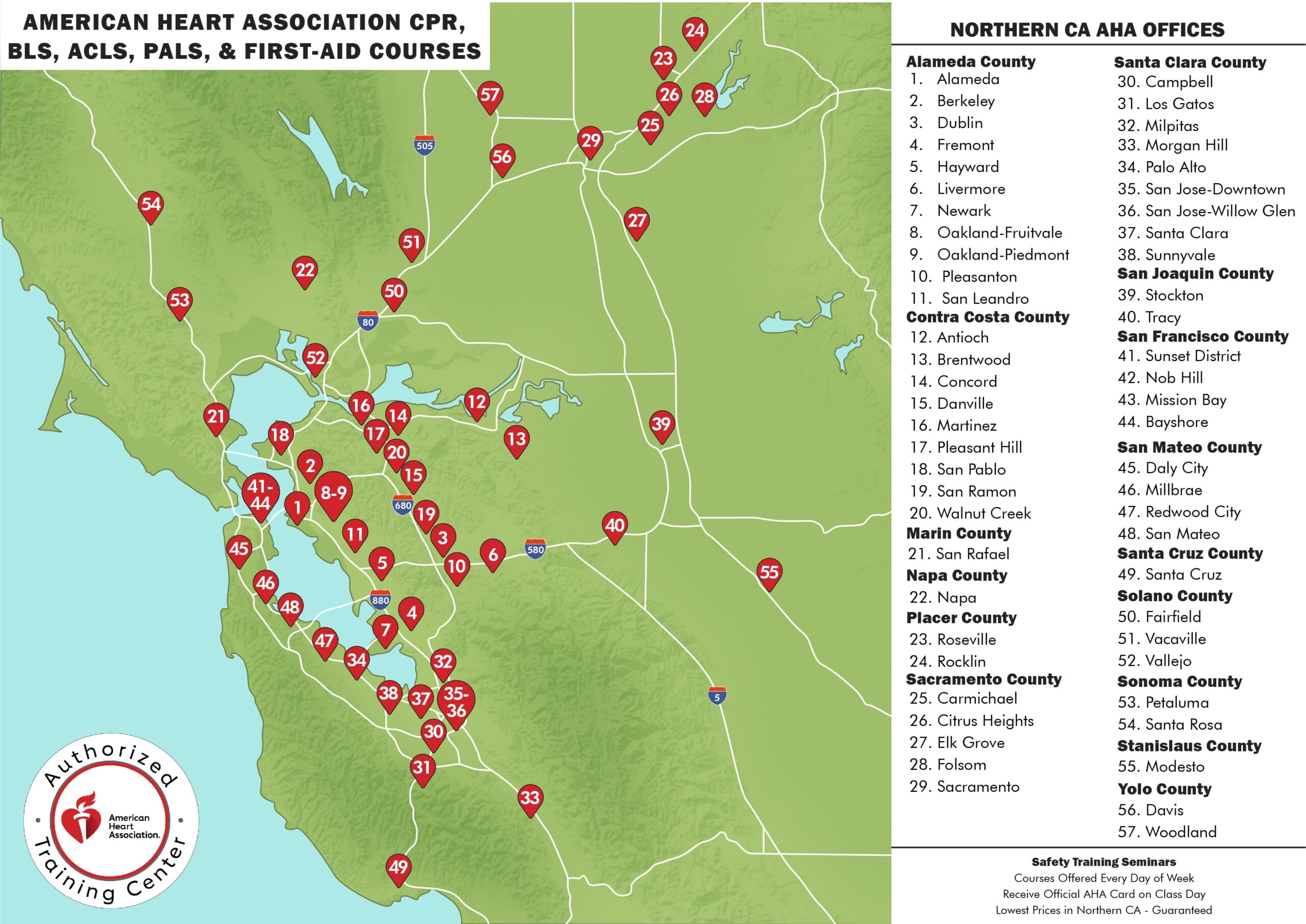
American Heart Association Course Registration
Safety Training Seminars offers American Heart Association CPR, BLS, ACLS, and PALS courses in Modesto, CA. This office is close by the surrounding cities of Stockton and Tracy. If you live in Modesto, you can take a BLS, ACLS, or PALS course near you. We can teach CPR & First-aid classes at your location any day of the week. Ask us about our group discounts.
American Heart Association Course Registration
Safety Training Seminars offers American Heart Association CPR, BLS, ACLS, and PALS courses in Modesto, CA. This office is close by the surrounding cities of Stockton and Tracy. If you live in Modesto, you can take a BLS, ACLS, or PALS course near you. We can teach CPR & First-aid classes at your location any day of the week. Ask us about our group discounts.
What is American Heart Association RQI
The American Heart Association RQI (Resuscitation Quality Improvement) program is one of the most popular, modern, and efficient ways for medical and healthcare professionals to receive their official American Heart Association BLS, ACLS, and PALS certification cards.
Three Easy Steps
1. Take the American Heart Association online course at home (a few hours).
2. Arrive to one of our 45 local offices and practice with the VAM (voice assisted manikin).
3. Receive your certification card on the day of the class.

About American Heart Association RQI
Entry Instructions for Modesto CPR Classroom
Modesto, California: Cultivating Community and Culture in the Heart of the Central Valley
Introduction: Nestled in the fertile heart of California’s Central Valley, Modesto is a city that thrives on its agricultural heritage, community engagement, and a burgeoning arts scene. With a rich history and a vibrant present, Modesto offers residents and visitors a warm and welcoming environment that celebrates both its past and its future.
Agricultural Legacy: Modesto’s roots run deep in the agricultural landscape of the Central Valley. Known as the “Gateway to Yosemite,” the city’s surroundings are a testament to the region’s agrarian history. Fields of almonds, walnuts, and peaches extend as far as the eye can see, contributing to Modesto’s reputation as a vital part of California’s “food basket.” The annual Modesto Certified Farmers Market is a celebration of the city’s agricultural heritage, offering fresh produce, artisanal products, and a space for community interaction.
Community Engagement and Events: Modesto takes pride in its strong sense of community, evident in the variety of events and festivals that bring people together. The Modesto Art and Wine Walk showcases local artists and vintners, allowing attendees to explore downtown while enjoying art and wine. The annual Modesto’s Graffiti Summer pays homage to the city’s classic car culture and the legendary “American Graffiti” film, featuring car shows, parades, and live music.
Vibrant Arts Scene: The city’s arts scene is flourishing, with numerous cultural institutions and events that highlight creativity. The Gallo Center for the Arts serves as a cultural hub, offering a range of performances, from concerts and theatrical productions to dance recitals and comedy shows. Modesto’s Art Walk and Third Thursday events invite residents and visitors to explore galleries, studios, and boutiques while connecting with local artists.
Historic Downtown: Modesto’s historic downtown district exudes charm and character, with its mix of architectural styles and boutiques that reflect the city’s rich history. The State Theatre, a restored Art Deco gem, stands as a reminder of Modesto’s cinematic heritage and serves as a venue for film screenings, concerts, and community events. The McHenry Mansion, a beautifully preserved Victorian-era home, offers guided tours that transport visitors back to the city’s early days.
Educational Excellence: Modesto places a strong emphasis on education, with its public schools striving for academic achievement and personal growth. The city’s Modesto Junior College is a cornerstone of higher education in the region, providing students with a diverse range of programs and opportunities for intellectual growth.
Parks and Outdoor Recreation: Modesto’s commitment to green spaces is evident through its parks and recreational areas. Graceada Park, with its tree-lined pathways and picturesque setting, offers a serene escape within the urban landscape. Dry Creek Regional Park is a haven for outdoor enthusiasts, providing hiking trails, birdwatching, and picnicking spots.
Cultural Diversity: Modesto’s cultural diversity is reflected in its neighborhoods, events, and local businesses. The city’s melting pot of ethnicities contributes to a culinary scene that features a wide range of international flavors. From Asian eateries to Mexican taquerias and Italian trattorias, Modesto’s dining options cater to a variety of palates.
Conclusion: Modesto, California, is a city that cherishes its agricultural heritage, fosters community connection, and embraces a burgeoning arts scene. From its historic downtown and cultural institutions to its strong sense of community engagement, Modesto offers a multidimensional experience that reflects the Central Valley’s spirit. As the city continues to evolve and adapt, it remains a testament to the power of preserving tradition while embracing innovation. Whether you’re exploring its arts venues, savoring its culinary delights, or participating in its lively festivals, Modesto invites you to discover the harmony between its past and its present.
Life-Saving Skills: Exploring CPR, BLS, ACLS, and PALS Classes
In the realm of emergency medical care, few skills are as crucial as Cardio-Pulmonary Resuscitation (CPR) and Advanced Cardiac Life Support (ACLS), Basic Life Support (BLS), and Pediatric Advanced Life Support (PALS) techniques. These life-saving techniques form the backbone of first response and medical intervention, often making the difference between life and death in critical situations. Let’s delve into the significance of each of these classes and their role in maintaining public health and safety.
Cardio-Pulmonary Resuscitation (CPR): CPR is a fundamental life-saving technique that can be administered by trained individuals to sustain blood circulation and provide artificial respiration when a person’s heart has stopped beating. CPR involves a combination of chest compressions and rescue breaths, aimed at keeping oxygenated blood flowing to vital organs until professional medical help arrives. CPR classes provide participants with the skills to recognize cardiac arrest, perform effective chest compressions, and deliver rescue breaths. These classes are vital for both medical professionals and laypersons, empowering them to respond swiftly and effectively in emergencies.
Basic Life Support (BLS): BLS takes CPR skills to the next level by incorporating additional techniques and equipment usage. BLS classes are designed for healthcare providers, including doctors, nurses, paramedics, and emergency medical technicians (EMTs). Participants learn how to assess a patient’s condition, deliver high-quality CPR, and use automated external defibrillators (AEDs) to restore a regular heartbeat. BLS training emphasizes teamwork, effective communication, and quick decision-making to optimize patient outcomes during cardiac emergencies.
Advanced Cardiac Life Support (ACLS): ACLS is an advanced course tailored for healthcare professionals who are involved in the management of cardiac arrest and other cardiovascular emergencies. ACLS builds upon the foundation of BLS and focuses on identifying and treating potentially life-threatening conditions such as stroke, myocardial infarction, and arrhythmias. Participants learn to interpret electrocardiograms (ECGs), administer medications, and perform advanced airway management. ACLS classes equip medical personnel with the skills to respond confidently to complex cardiac scenarios, ensuring comprehensive care for critically ill patients.
Pediatric Advanced Life Support (PALS): PALS training is geared towards healthcare providers who care for infants and children during emergencies. Pediatric patients have unique physiological needs, making PALS classes essential for those working in pediatrics, emergency medicine, and intensive care. PALS courses cover topics such as pediatric assessment, effective respiratory support, and the management of pediatric cardiac arrest. Participants gain the knowledge and skills necessary to provide specialized care and interventions that can make a critical difference in the outcomes of pediatric emergencies.
NRP, or Neonatal Resuscitation Program, is a critical medical initiative that focuses on saving newborns who struggle to breathe at birth. This specialized training equips healthcare providers with the skills to assess and manage respiratory distress in infants. NRP emphasizes a systematic approach, teaching effective ventilation techniques and chest compressions if needed. Regularly updated guidelines ensure that participants stay current with the best practices in neonatal care. By enhancing healthcare professionals’ abilities to respond swiftly and effectively to newborn respiratory challenges, NRP plays a vital role in improving infant survival rates and ensuring a healthier start to life.
First-aid classes offer indispensable life skills that empower individuals to respond confidently in emergencies. These structured courses cover a spectrum of situations, from minor injuries to critical incidents, teaching participants how to provide immediate care before professional help arrives. Participants learn to administer CPR, treat wounds, manage choking, and address common health crises. Hands-on training fosters essential skills and boosts confidence, enabling swift and effective action in times of need. First-aid classes are invaluable for workplaces, homes, and communities, creating a network of capable first responders. Mastering these skills not only saves lives but also fosters a safer and more prepared society.
Incorporating these life-saving techniques into healthcare systems, workplaces, and communities can significantly enhance the response to medical emergencies. Quick and effective interventions provided by individuals trained in CPR, BLS, ACLS, and PALS can stabilize patients and improve their chances of survival before professional medical assistance arrives. Moreover, these classes promote a culture of preparedness, empowering individuals to step forward and take action when faced with emergency situations.
In conclusion, American Heart Association CPR, BLS, ACLS, and PALS classes play an indispensable role in equipping individuals with the skills and knowledge needed to respond effectively to various medical emergencies. These courses bridge the gap between bystander assistance and professional medical care, ultimately contributing to improved patient outcomes and increased survival rates. By investing in these life-saving classes, individuals and healthcare professionals alike become vital links in the chain of survival, ensuring that timely and appropriate care is delivered when it matters most.
Our Blog

Psychological Recovery for CPR Survivors
Explore the mental health challenges faced by CPR survivors and learn about the coping mechanisms and support systems that can aid their psychological recovery.

Why CPR is Important in Healthcare
Cardio-pulmonary resuscitation (CPR) is a life-saving technique that everyone should know how to perform. It involves a series of actions designed to help someone who

7 Common CPR Myths Debunked
Cardiopulmonary resuscitation (CPR) is a life-saving technique that can help a person in the event of cardiac arrest. It involves chest compressions that are performed



